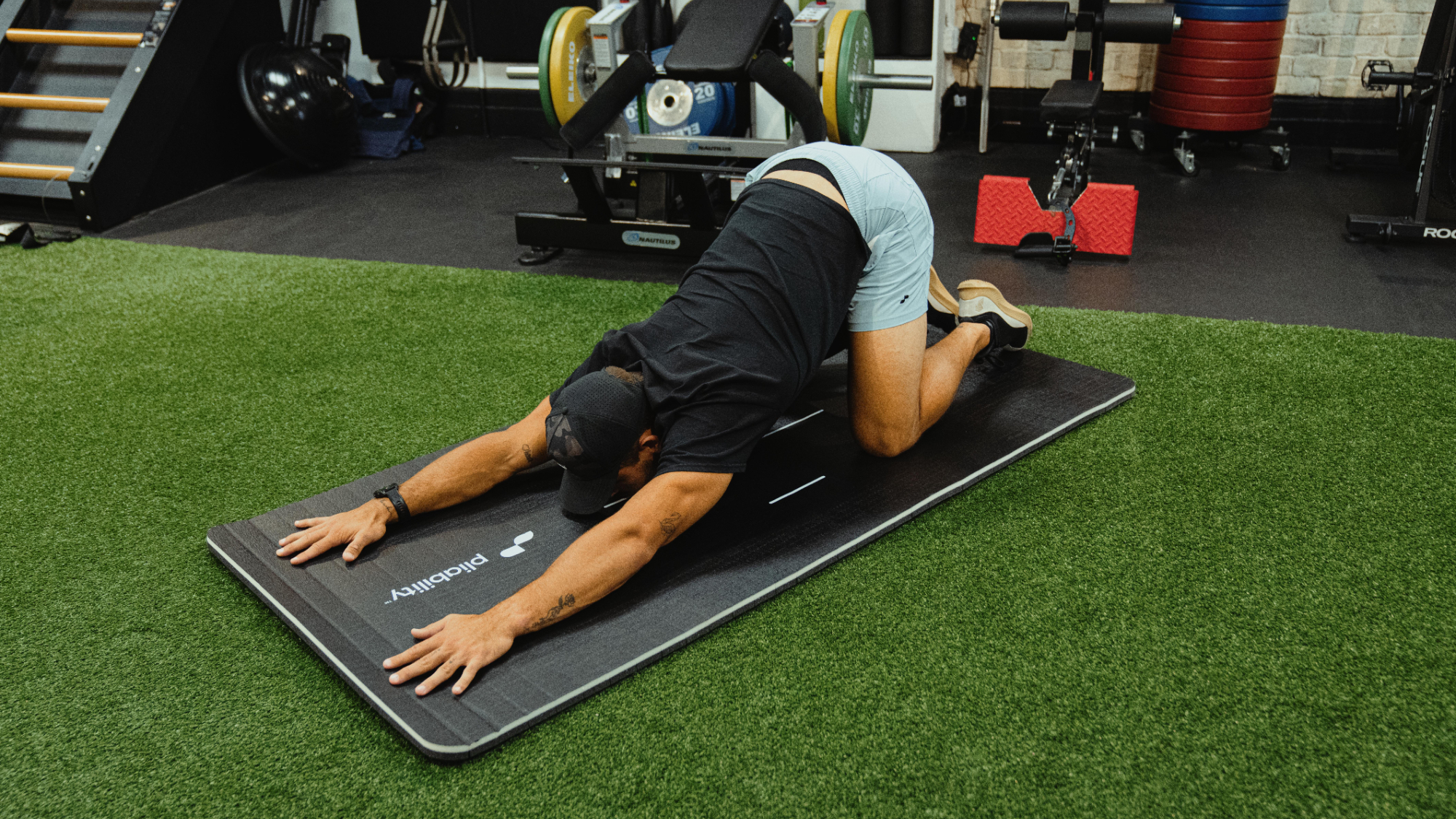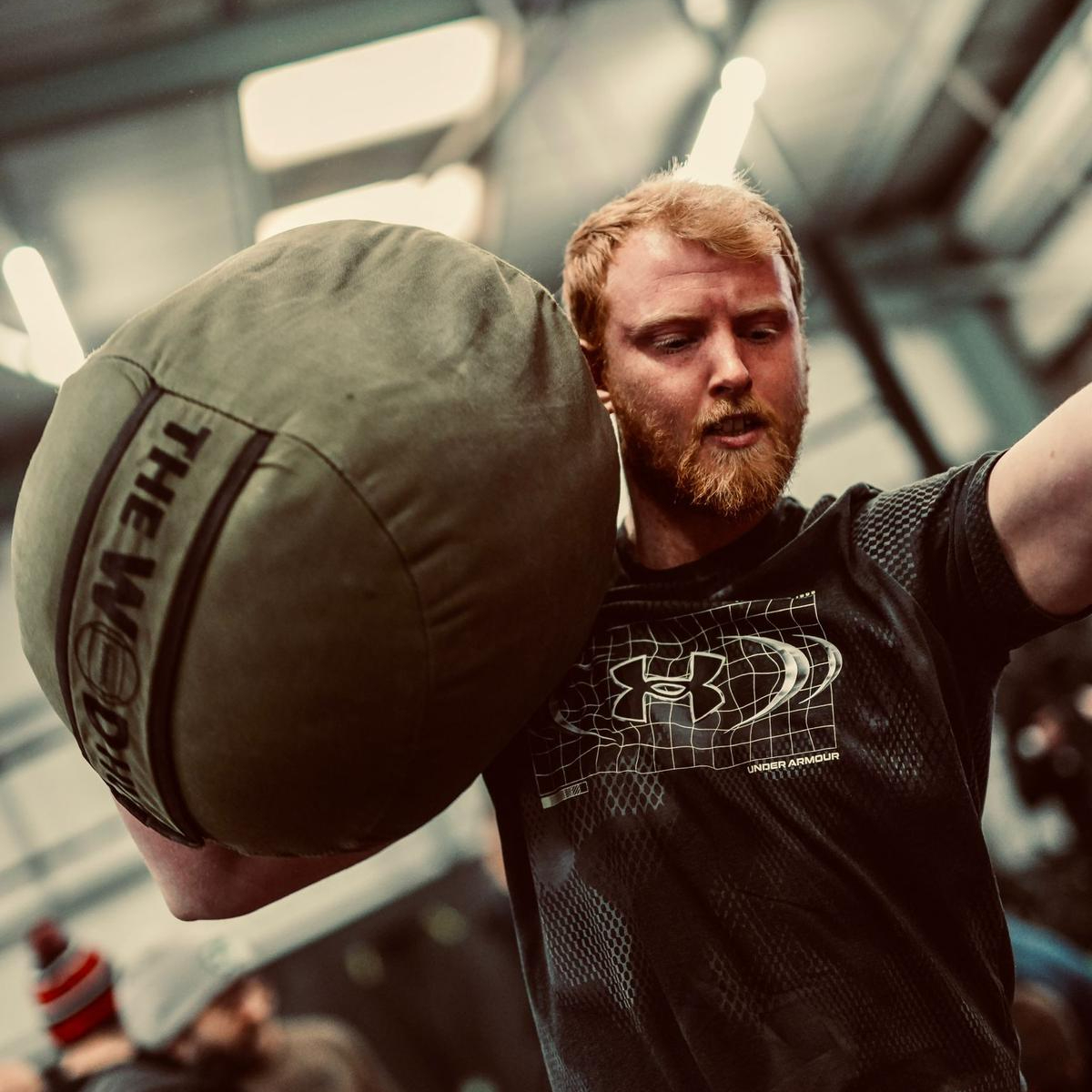‘Stretching needs to be a crucial part of your life’ – flexibility expert recommends these three stretches to ‘hit the whole body’
Try adding these moves into your day to soothe sore muscles and enjoy a moment of calm

Adding a little more movement into each day is one of the simplest things you can do to boost your health. Stretching is one of the most accessible (and enjoyable) ways of doing this.
“It’s something that has massive benefits, and it really needs to be a crucial part of your life,” says Cody Mooney, managing partner at Pliability, one of the best fitness apps for guided stretching routines.
Below, he’s recommended three stretches that will benefit most people if weaved into their regular schedule. Combined into a routine, they “hit the whole body” to help alleviate tightness caused by too much sitting, keep you moving freely, and provide a few minutes of welcome relaxation during your day.
How to do Cody Mooney’s three-move stretching routine
This routine should take a maximum of 12 minutes. Perform the poses one after the other, holding each one for two to three minutes (or two to three minutes on each leg for the pigeon pose).
“You shouldn’t push yourself into these poses, and you shouldn’t ever feel pain,” Mooney advises. “Everyone’s built differently and everyone has different levels of flexibility. Take your time getting into each stretch – this should be a nice moment, not a stressful one.”
It’s also important to keep your breathing steady throughout each stretch.
“For me, it’s not about doing a specific breathing routine,” Mooney explains. “I just breathe in through the nose and out through the mouth, allowing me to be nice and relaxed. Each time I breathe out, I’ll try and sink a little bit deeper into the pose if I can, and surrender into the stretch.”
Get daily insight, inspiration and deals in your inbox
Sign up for breaking news, reviews, opinion, top tech deals, and more.
1. Pigeon pose

- Start in a high kneeling position.
- Extend your right leg in front of you, then bend your knee so your shin runs across your body.
- Extend your left leg behind you and sink your hips back as far as you comfortably can.
- Hold this position for two to three minutes on either leg.
- To feel a deeper stretch, gently lean over your front shin.
Expert insight
“This is a really passive pose which is great for releasing [tightness in] the back and letting the glutes [butt muscles] relax,” says Mooney.
“A lot of people sit down for most of the day, which can cause tightness in the glute medius and piriformis area – the upper part of the glute that runs from your hip to your sacrum area. This pose is great for hitting that spot."
“If you're able to, you can also really start to let your chest sink towards the ground as you relax into it.”
2. Saddle

- Start on your hands and knees.
- Sit your hips back onto your heels, keeping your spine long.
- Lean backwards until you’re resting on your hands, elbows, or legs, depending on what your body allows and what feels comfortable.
- Hold this position for two to three minutes.
Expert insight
“The saddle stretch really hits the front of the leg, the quads and the hip flexors, which are two big areas that can get really tight from sitting down,” Mooney explains.
“When this area is tight, it puts the pelvis into a position that might be causing constant lower back pain and tightness in the front of the hip flexor, and a lot of us do feel a bit of impingement on those.”
The most flexible people will be able to lean right back onto their legs, but this isn’t necessary to enjoy the benefits of the stretch. You can make it less intense by resting on your elbows or arms or, as Mooney likes to do, moving in front of his couch so he can rest his back against it.
3. Child's pose

- Start on your hands and knees.
- Bring your knees out wide, put your toes together, then sit back onto your heels.
- Lower your chest towards the floor, extending your arms out in front of you.
- Allow your forehead to rest on the ground or an elevated surface like a pillow if you can’t reach it.
- Hold this position for two to three minutes.
Expert insight
“This is a really common pose in yoga, and one a lot of people know,” Mooney says. “I like to reach my hands out as far in front of me as I can, which really elongates my spine.
“You can also feel it in the lats [the broad, flat muscles of the back] and the upper back, helping that posture in the upper back as well. It’s a really nice, restorative pose.”
This move won’t feel as intense as other stretches, making it an enjoyable relaxing option to end on.
Benefits of stretching
Mooney, a former CrossFit Games athlete, is a huge advocate of stretching and has incorporated it into his regular routine for many years.
“I love it, it really helps me, and it’s been a huge part of my life,” he says. “For me, it’s all about having longevity in what I love to do, which is to live an active life. I can take care of my body and give it what it needs, and this is part of it."
“If I do that, I hope it gives me longevity in those things, preventing injury and pain.”
But one 12-minute stretching routine isn’t going to transform your body. Mooney says consistency is key, recommending three to five stretching sessions per week. The Pliability app has features such as streaks, short routines, and daily follow-along videos to encourage this.
“We believe that, with consistency, the true magic happens. Mobility and flexibility take time, it’s not instant.”
So, what effects can you expect from consistent stretching?
“You can definitely see it in tight areas,” says Mooney. “If you had a little nagging injury beforehand, it can help.
"You’ll see it over time if you had more of a chronic pain like lower back pain too. You start to get into these regular stretches then your hips become more flexible, your hamstrings become more flexible, and you start to notice that lower back pain isn’t there anymore."
“You’ll also see it in your movement patterns. Maybe your golf swing feels better after a couple of months, you can squat below parallel, or you can extend your arm in an [overhead] press. You'll start to see this progress over time, and you'll start to feel really good as well.”
However, while most impacts of stretching take time, there is one area where you might notice a change straight away.
“I think there is also a mindfulness part of it,” Mooney says. “It’s something that isn’t intense, allowing you to have that time for recovery. A lot of us live very intense lives, so that can be a winding down, grounding moment.”
You might also like...
- Sleep expert shares seven easy tips to boost your sleep, lift your mood and improve your self-control
- Trying to walk 10,000 steps a day? These three top tips from a walking expert will help you cross the finish line
- Pilates instructor recommends these 5 moves to undo the damage of sitting at a desk all day

Harry is a huge fan of picking things up, putting them down again and writing about it, which uniquely qualifies him for the position of fitness and wearables writer with TechRadar.
He’s an NCTJ-qualified journalist with a degree in English and journalism and several years’ experience covering the health and fitness beat. This has involved writing for the likes of Men’s Health, Women’s Health, Runner’s World, Fit&Well, Live Science and Coach.
Harry is passionate about all things exercise-related, having spent more than a decade experimenting with a wide range of training styles. He's used strength training, bodybuilding, Pilates, powerlifting, gymnastics, rowing, yoga, running, calisthenics, CrossFit and more to build a fit, functional body (and have fun while doing it).
When he’s not writing or training, he can usually be found racing his dog Archie up scenic hills in the south west of England or working to complete his NASM-certified personal trainer qualification.